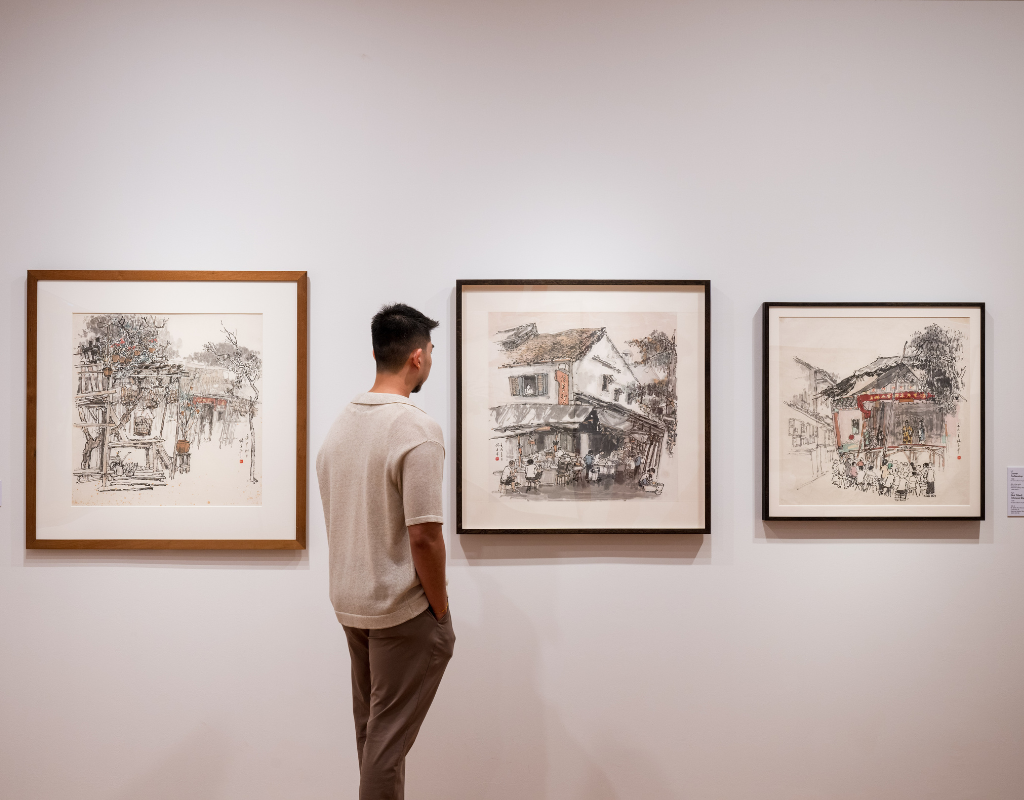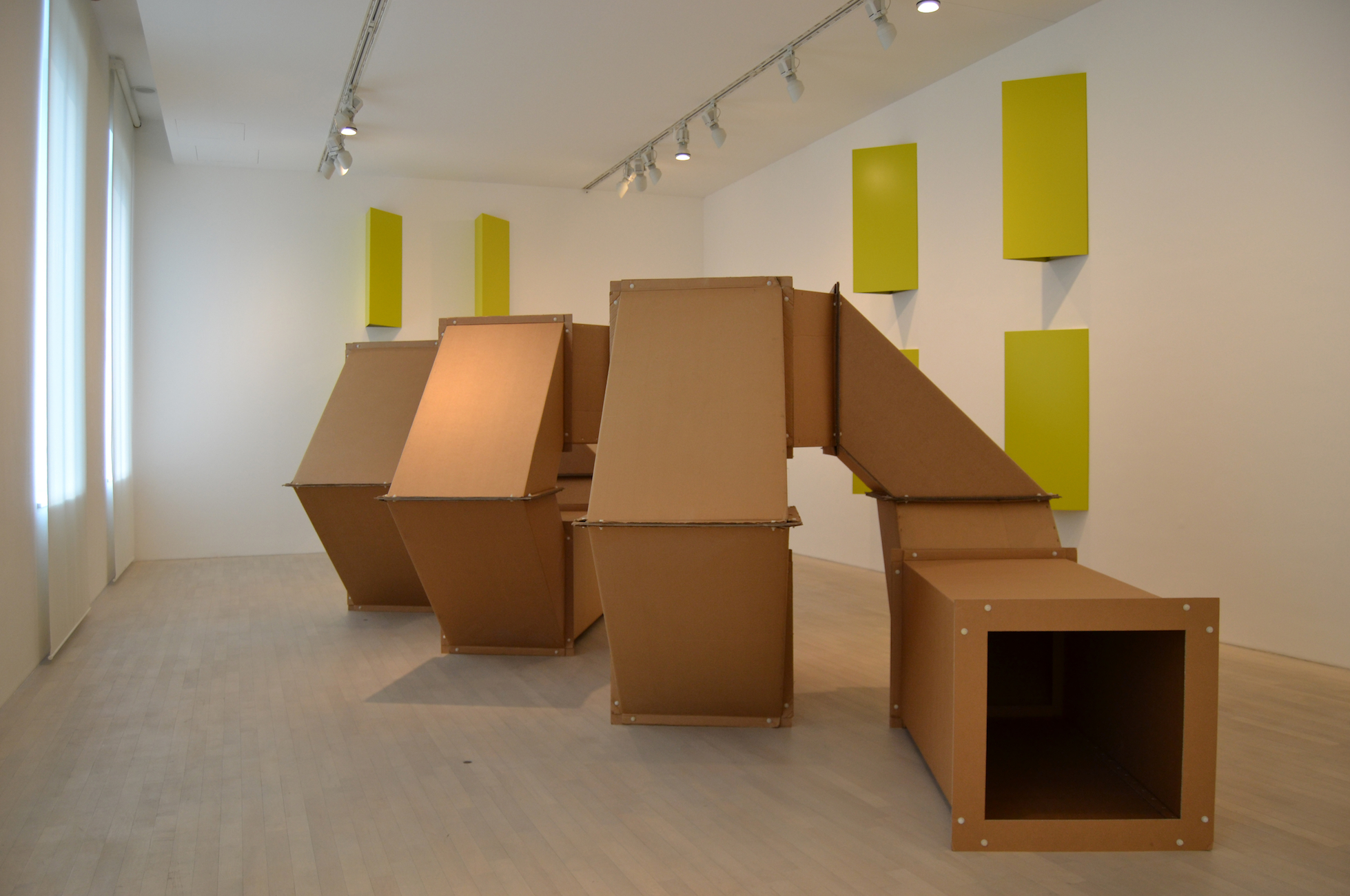Series D (Square Tubes)
What would you think if I said that you could assemble this work yourself? Charlotte Posenenske intended for these configurations to be flexible. In a manifesto she wrote in 1968, she declared: “I leave this alteration to the consumer, who hereby again and again participates in the assembly process.” In fact, at an event in Frankfurt in 1967, assistants continually moved the individual units around to create perpetually changing structures. One important element that makes this possible is the material that Posenenske chose to use. As you can see, this work’s four modular units are made out of light, flat-packed corrugated cardboard, and do not need to be handled by a skilled craftsman. These straightforward geometric forms can be put together in any number of ways to suit the space in which they are displayed.
In addition to audience participation, concepts like reproducibility were important concerns for the German artist. Posenenske allowed her work to be reconstructed, and sold these variations at the cost of the material. These reconstructions are not considered replicas and appear identical to her prototypes. She challenges the idea that artworks are original and exclusive, thus deflating the voracious economy of the art market.
It was important for Poseneske that art fulfilled a social function, but she eventually came to believe that this was not possible. When that realisation happened in 1968, she stopped working as an artist. She instead became a sociologist who specialised in employment and industrial working practices.
Artwork details
- Artwork Title
- Series D (Square Tubes)
- Artist
- Charlotte Posenenske










